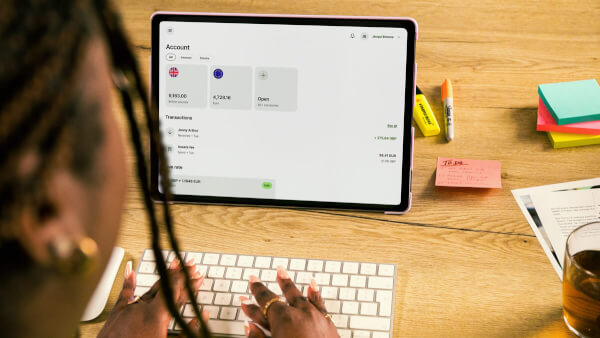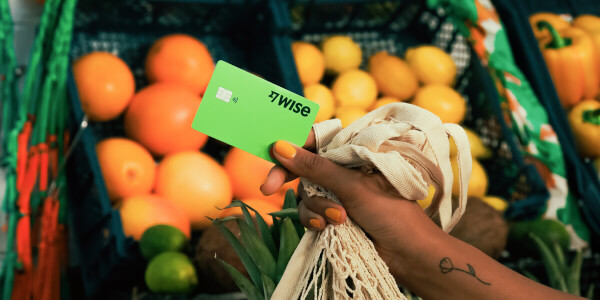Wise ACH vs wire guide
Everything you need to know about using Wise for USD transfers and paying via ACH vs wire

Who doesn’t love a vacation to a new country? We all enjoy the sights, sounds, smells, and tastes of a foreign locale. But nobody loves racking up foreign transaction fees on their credit card. And that can happen with the wrong credit card. It’s better to spend your money on skis, not fees.
A foreign transaction fee is a percentage (usually around 3%) added to a credit card purchase in a foreign country. That may not be much when applied to a baguette, but it adds up quickly over the course of a vacation, especially when you factor in bigger-ticket items like train tickets and car rentals. Savvy travelers will want to choose a credit card that lets them journey through the world without hitting them with an extra fee for every card swipe.
This article breaks down the Capital One Quicksilver card, it’s rewards and fees (including foreign transaction fees), and then offers pointers about foreign currency exchange. Let’s dive in.
We’ll cover the following topics.
The ideal credit card for travelers abroad is one that doesn’t include a foreign transaction fee. Capital One offers an array of cards, some with foreign transaction fees, and some with none. The table below breaks down the fees and rewards for the Capital One Quicksilver card.
| Card Name | Rewards | Transaction Fee | Annual Fee |
|---|---|---|---|
| Capital One Quicksilver |
| None | None |
As you can see, the Capital One Quicksilver card is a wonderful option for a travel credit card. First, it offers nice rewards perks, in the form of both a $150 cash bonus for spending $500 within three months, and 1.5% cash back on every purchase. It also doesn’t carry an annual fee or a foreign transaction fee. If you want to start using a new card for an upcoming trip, this is a great option.
Foreign transaction fees are an understandable concern for frequent travelers. But they’re not the only fee to be aware of. Credit cards are a helpful personal finance tool, but they can come attached with additional fees in addition to foreign transaction fees. Some typical fees are an annual fee (Capital One Quicksilver also doesn’t have this), a penalty fee charged on late payments or payments that the bank returns, cash advance fees, and balance transfer fees.
But there’s another sneaky type of fee that can eat into your travel budget, and that’s currency exchange rates. Foreign countries use different currencies than your home country, obviously. So in order to spend money in another country, you have to have your cash changed into cash in the local currency. You can do this ahead of time at a local bank, at a kiosk at the airport, or a currency exchange business in the city in which you arrive. Exchange rates are in a constant rate of fluctuation, so it’s helpful to have an objective resource that can tell you the current rate for a currency pair, like USD/EUR (US dollars and Euros). You can find the real exchange rate of a currency pair by searching it on Google, or by using Wise’s helpful currency converter.
All currency pairs have two values at any given time. There’s the “buy” value, which is the price you can buy a currency at. Slightly lower than that is the “sell” value, which is the price you can sell the currency for. Currency exchange businesses don’t charge you a fee for exchanging your currency. Rather, they offer you a less favorable exchange rate than the real exchange rate you see on Wise, and pocket the difference.
So it’s important to shop around when looking for a currency vendor. Some offer you a competitive rate that leaves you walking out with plenty of cash, and some (especially the ones in airports) figure you’re in a hurry and won’t notice or mind if they pocket a few more cents on every dollar or euro. Here’s a tip: when searching for a trustworthy currency vendor, look for one that offers an exchange rate closest to the mid-market rate.
One can’t-miss way to avoid the entire hassle is to use a Wise Borderless account. It’s an online bank account that you can access and withdraw from around the globe. Borderless account holders are issued personal banking details for a group of countries. That means you can get cash locally, whether you’re in the US, UK, Australia, or anywhere in the European Union. You won’t have to pay any bank fees, and your cash will be exchanged at the mid-market rate. World travelers can move freely, without worrying about how they’re going to get local cash at a fair rate.
Keep an eye on Wise, because they have another great offer coming out soon. Wise is releasing a Mastercard debit card. It will allow you to pay out in local currencies (no charge), withdraw up to $250 every day for up to 30 days (also no charge), exchange money at the real exchange rate, and convert money to a different currency for a low conversion fee (from 0.35% to 2.85%). To join the waitlist for the Wise debit Mastercard, visit here.
ATMs are a convenient way to get extra cash when traveling. But wise travelers know to be careful with ATMs.
The first thing to watch out for is how you receive your payout. ATMs often give you the option of taking your payout in your home currency. Seems like they’re doing you a favor, but ask yourself: why are they offering this? It may come as no surprise that home currency payouts benefit the bank more than the customer. Banks charge an unfavorable rate and pocket more of your money that way.
This “service” goes by another name: “Dynamic Currency Conversion.” It may seem like a helpful offer for the traveler, taking a payout in your native currency gives the bank the power to set its own rate and stuff hidden fees into that rate. It’s a great deal for them, not you.
If an ATM lets you choose to be paid out in your home currency or the local currency, always choose local. An ATM is the wrong machine to trust with your currency conversion.
The Capital One Quicksilver card is a winning choice for a traveler’s credit card. You pay no annual fee or foreign transaction fee, and earn cash back on your purchases. You can save a lot of money not having to pay an extra 3% every time you make a purchase.
If you’re a world traveller, keep Wise in mind for your financial needs. They offer a wealth of services that take the headache out of money management abroad. The Wise currency converter gives you the fair exchange rate, their multi-currency account lets you get cash for the optimal exchange rate, and the soon-to-be-released Wise debit card lets you make purchases directly from your borderless account with no cash withdrawal required. With Wise, managing your money on-the-go is easy and cheap.
Sources:
All sources last checked 29 March 2019
*Please see terms of use and product availability for your region or visit Wise fees and pricing for the most up to date pricing and fee information.
This publication is provided for general information purposes and does not constitute legal, tax or other professional advice from Wise Payments Limited or its subsidiaries and its affiliates, and it is not intended as a substitute for obtaining advice from a financial advisor or any other professional.
We make no representations, warranties or guarantees, whether expressed or implied, that the content in the publication is accurate, complete or up to date.

Everything you need to know about using Wise for USD transfers and paying via ACH vs wire

Learn all about how the Wise card compares to no FTF ones.

Can you use a Wise Account to convert money you earn?

See how the Wise card compares with Chase Sapphire in our complete guide

Discover in detail whether your account information is visible to the recipient when you make a payment through Wise.

Not sure if Instarem or Wise is the best option for you in the US? Check our guide and find out.